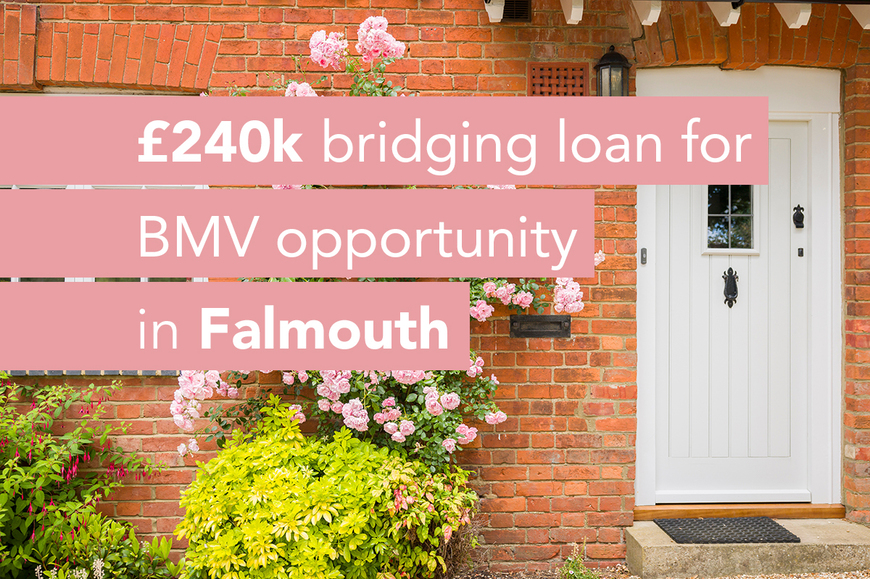Renovation bridge loan for the purchase of a family bungalow in Falmouth
A son faced an opportunity to obtain ownership of their much-loved family home in Falmouth, a 3-bedroom detached 1940s bungalow.
The son, eager to secure the property from his parents and keep the bungalow in the family, had to raise finance to prevent the unmortgageable home from being sold at auction due to rising debt.

Bridging loan required urgently to save family home
The family home, with a current market value of £350,000, held sentimental value as the son's childhood home. Recognising the need for essential renovations, particularly resin injection underpinning, the son sought bridge finance as the property was deemed unmortgageable. The parents were willing to sell the property at a discounted rate of £230,000 – a figure enabling the son to acquire the property without a deposit.
The main challenge was time-sensitive: the son needed a bridging loan of £240,000 to secure the property before it went to auction. With a planned 6-month term, the intention was to use the loan (secured against the son's primary residence) for the essential renovations and mortgage once these were completed.
The property had an estimated value of £350,000, and with £10,000 allocated towards the work required and SDLT, the total finance requirement was £240,000 - equating to a loan-to-value (LTV) ratio of 76%.
Exploring the benefits of bridging loans for house purchases
Here are the primary advantages that make bridging loans an appealing option for those navigating the intricate process of house purchases.
Quick arrangement: One of the main advantages of a bridging loan is the quick nature of its arrangement. Unlike traditional mortgages, which typically have a prolonged application and approval process, bridging loans can be quickly organised.
Flexibility amidst circumstances: Bridging loan lenders distinguish themselves by their flexibility. Even if an individual's financial circumstances are less than ideal, bridging loan providers are often more accommodating than traditional mortgage lenders.
Overcoming challenges: Bridging loans extend their support beyond the conventional, allowing borrowers to purchase unmortgageable properties. This provides opportunities for individuals seeking to acquire and develop properties before transitioning to a traditional mortgage.
Monthly payments: A feature of bridging finance is the deferral of monthly payments. Unlike traditional mortgages, where borrowers are obligated to make regular monthly payments, the interest accrued on bridging loans is often added to the total loan amount. This arrangement provides borrowers with financial flexibility during the bridging period.
Exit strategy: The flexibility to pay off the loan anytime without hefty exit penalties. This aligns with the nature of property transactions, enabling borrowers to transition seamlessly from a bridging loan to a more permanent financing solution.
The advantages of using a bridging loan for house purchases lie in their responsiveness, flexibility, and adaptability to financial circumstances and property scenarios.
Navigating success with a £230,000 bridge finance and exit plan
Upon completing the resin injection underpinning and other essential renovations, the family successfully transitioned from the bridging loan to a mortgage, settling the debt and securing the property for the son. The bridge loan was repaid once the son secured a buy-to-let mortgage, intending to rent the property as an investment.
A bridging loan, aligned with a solid exit strategy, can assist in preserving a family home in challenging circumstances and keep it within the family.
